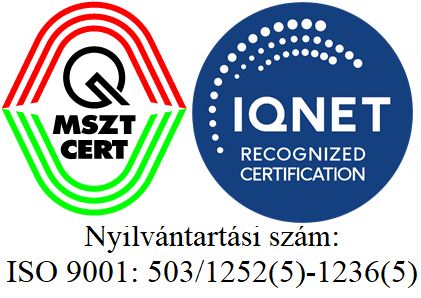SUPERVISION OF SECURITY OF NUCLEAR FACILITIES, NUCLEAR AND OTHER RADIOACTIVE MATERIALS
Pursuant to the definition of the Atomic Act the application of atomic energy means activities in connection with nuclear and other radioactive materials, equipment and facilities generating ionizing radiation and serving for the use of nuclear and other radioactive materials. The fundamental objective of regulatory supervision over the various uses of atomic energy is to avoid any damage to the people and the environment, without unduly limiting the operation of facilities and performance of activities entailing risks. Additionally, basic interest and obligation of the states operating nuclear facilities and using radioactive materials to guarantee the security of operation of nuclear facilities, and the use, storage and transport of nuclear and other radioactive materials with effective physical protection.
The physical protection of nuclear materials was grounded by the International Convention on the Physical Protection of Nuclear Materials of 1980, which was signed and then ratified by Hungary with the Law Order 8 of 1987. Based on the experience gained in the meanwhile and the extension of the fight against terrorism, the Convention was modified with univocal agreement on a Diplomatic Conference held in Vienna in July 4-8, 2005. Hungary signed the Amendment among the first countries and then ratified it with Act LXII of 2008.
In order to facilitate the compliance with the Convention and the Amendment, the International Atomic Energy Agency published the INFCIRC/225rev.5 requirement level document on the physical protection of nuclear materials and nuclear facilities, which summarizes the elements of a state security regime, the categorization of nuclear materials, the physical protection requirements for nuclear materials in use, storage or transport, as well as the physical protection requirements of nuclear facilities against sabotage.
The realization of the stipulations undertaken by Hungary, at the highest level, is represented by the Atomic Act, which includes the fundamental security principles and establishes the frame of the detailed physical protection regulations. The government decree on the physical protection and the connection licensing, reporting and inspection system come into force on October 4, 2011 based on the authorization provided in Article 67 q) and r) of the Atomic Act. Pursuant to Article 31 of the Govt. decree, the Hungarian Atomic Energy Authority performs the licensing and inspection of the establishment, operation and modification of the physical protection systems of nuclear facilities, radioactive waste repositories, nuclear materials, radioactive sources and radioactive wastes, with special authority contribution of the Hungarian Police Headquarters.
The physical protection is the integrity of internal regulations, technical equipment and security guard forces. Physical protection, as a part of nuclear security, aims to prevent and deter, detect, delay and respond to unauthorized removal of materials and sabotage against equipment.
1. The prevention aims at avoiding nuclear and other radioactive materials, as well as equipment generating ionizing radiation without containing radioactive material out of regulatory control, occurrence of unlicensed and unlawful activities, and at establishing sanctions in order to deter such actions.
2. Detection aims at monitoring the traffic of nuclear and other radioactive materials, equipment generating ionizing radiation without containing radioactive material, as well as connecting technologies, to detect illicit trafficking, unlicensed activities.
3. The response aims at mitigating, eliminating consequences of unlawful actions, identifying and sanctioning actors, and at performing measures in relation to missing, found and seized radioactive materials.
The Atomic Act introduces three fundamental principles regarding physical protection:
1. According to the graded approach, the physical protection system shall be constructed based on the threat against the given material, equipment or nuclear facility. During the identification of the specific threat and the level of the requirements to be applied, the attractiveness and the danger of the materials shall be taken into account.
2. According to the defence in depth (multilayer protection) principle, the principles and technical solutions applied during the establishment of physical protection shall be realized in the complex system, where the system guarantees the realization of the required level of protection through the combination of subsequent and independent protection layers.
3. According to the balance protection principle, the physical protection system shall provide more or less identical protection against different adversary pathways and tactics.
The physical protection plan shall summarize the operation of the system providing physical protection for nuclear facilities, nuclear and other radioactive materials in use, storage and transport, as well as the realization of deterrence, detection, delay and response physical protection functions.
The scope of the Govt. decree 190/2011. (IX.19.) Korm. includes the mobile and installed equipment generating ionizing radiation without containing radioactive materials. The adversary capability of such equipment is low; nevertheless, prudent protection is required, and specific requirements are established even in this case. However, based on the graded approach, physical protection plan shall not be prepared by the licensees.
The HAEA summarizes its recommendations on the compliance with the legal requirements, and on the facilitation of timely and unobstructed licensing and inspection procedures in physical protection guidelines.



 ©HAEA - All rights reserved
©HAEA - All rights reserved